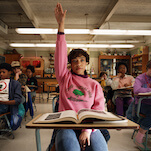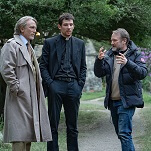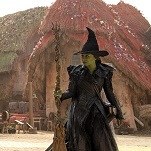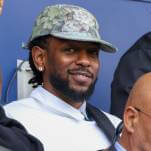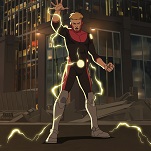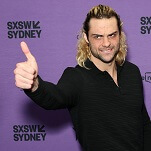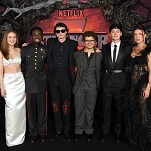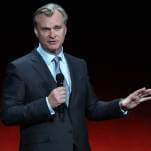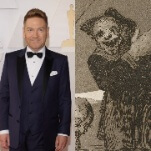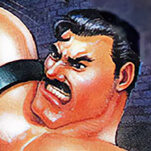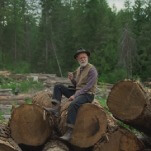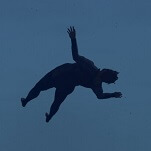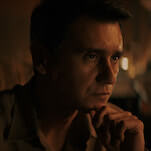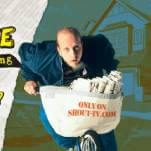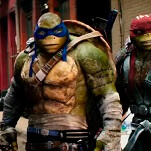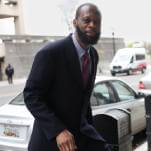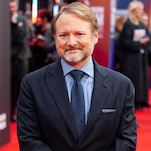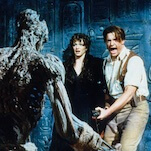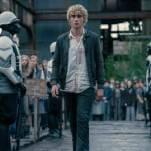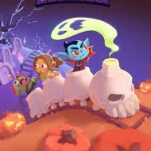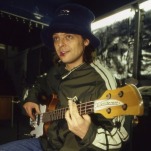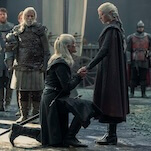The life of a sports team’s mascot is not an easy one. Widely adored, while being utterly anonymous, the brave people in the goofy suits risk their health and dignity in pursuit of a goal that remains forever elusive. While they can shout and dance and cheer, their efforts have no practical effect on the outcomes of the games they attend. Morale can work wonders, but even a great mascot can’t turn a losing team into a winning one. And yet game after game, through streaks and droughts, they are required to jump, dance, flip, and parade through the crowd powered only by their enthusiasm and their craft. A mascot is the purest expression of the old adage “all that matters is how you play the game”; in their cartoon costumes and slang names, they represent fandom at its most innocent, its most pure, and its most mockable.
In its first three episodes, Hulu’s new offering Behind The Mask straddles the line between admiration and contempt with enjoyable, if unspectacular, results. The show splits its focus among four mascots at varying levels of the industry. Michael Hostetter is a student at Lebanon High, where he proudly dons a tree costume to play “Rooty” for the school’s regularly disastrous football team. Jon Goldman, a student from University Of Nevada, Las Vegas, dresses up as the mustachioed “Hey Reb” and is staring down the barrel of his sixth and final year of college. Chad Spencer does his “Tux The Penguin” routine for a local hockey team and dreams of breaking through to the pros. And then there’s Kevin Vanderkolk, a.k.a. “Bango” for the Milwaukee Bucks, at the pinnacle of the mascot career path, having broken through to the mainstream with a stunt crazy enough to hit the front page of Yahoo.com.
The characters settle into place quickly. Each episode of the show is split among the four leads, and at 24 minutes per episode, that’s about six minutes each. As a result, the stories are quick, the narratives leaving a lot to be desired. The personalities work, though. Hostetter is a perfectly nice, clearly shy young man whose efforts to break out of his shell while dressed up like a cedar tree are a compelling mixture of the deluded and the charmingly heartfelt; a dance-off with a rival mascot in the second episode is about as thrilling as watching two teenagers shuffle around in the dirt can be, and yet the small victory is undeniable. At times, the show’s unblinking attention to the teen’s life borders on cruelty; Lebanon is a small, dying town, Hostetter is the kind of guy who probably won’t find his real niche in life until adulthood, and his determination to somehow make everything better through sheer force of will feels like the sort of effort that can’t possibly end well. Yet, the tension between the deniable reality of his situation and the dorky, unabashed way he faces it is the closest thing to a hook the series has.
The other three offer value primarily as glimpses of what it’s like to be a mascot at varying levels of the profession, each one slotting into a “type,” although those types bleed together a bit. Goldman is the bro of the bunch, introduced in his very first scene trying to run a play from the pick-up artist handbook, but the underlying pathos of his arc—he’s in his sixth year at school, graduating next spring, and clearly believes he’s saying goodbye to the best time of his life—makes him somewhat sympathetic. Spencer is the working-class dude who loves his job, loves making people happy, and worries about money; Vanderkolk is the family man whose daredevil nature might be putting him at risk for injury down the line. Each segment centered on the three is watchable, and occasionally even suspenseful (in its limited way), but the focus is so abbreviated and shallow that none of them stand out. The behind-the-scenes context is brief, and while there’s nothing that says the show needs to be a cutting-edge insider exposé, much of it is so slight as to be almost instantly forgettable. That doesn’t make it a bad show, but it’s curious when one segment features Goldman getting pissed off at being mocked as he dances with cheerleaders and shoots fireworks from his fingers, only to cut to Hostetter, shuffling in the dust. There’s something powerful going on, but no indication anyone behind the camera knows what to do with it.


